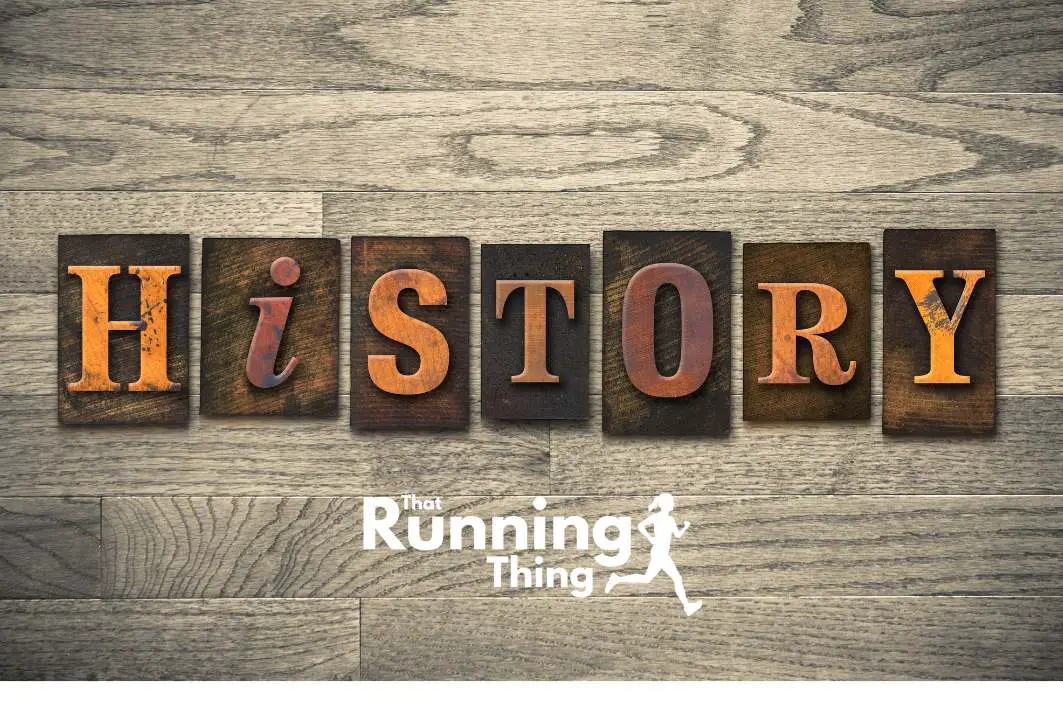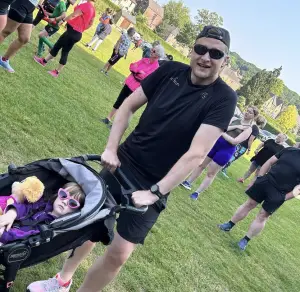Running is a fundamental human ability that has been around for thousands of years.
It is a natural movement humans have been doing since the dawn of time. But exactly when was running invented?
Our records of running date back to ancient civilizations, where running was necessary for survival.
Evidence shows that the earliest running-themed sports events were organized around 600 and 1100 B.C. during the Tailteann Games in Ireland.
However, running as a sport has evolved over time, becoming an essential part of modern-day fitness routines.
While running was never invented, as it is a natural human ability, its evolution as a sport and exercise form has a fascinating history.
In this article, we will delve into history, try to answer the question “when was running invented” and explore how it has evolved over time to become a popular form of exercise and sport worldwide.
When Was Running Invented?
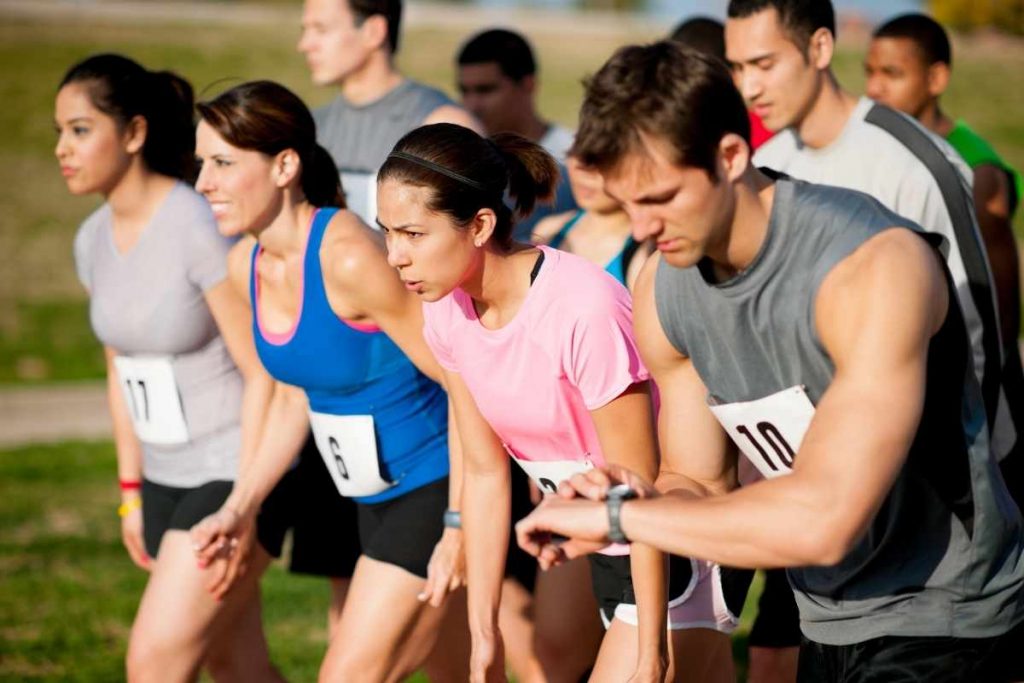
Running was not invented by a single person, nor was it an activity that was created at a specific point in time. “When was running invented” is, therefore, a difficult question to answer.
It is a natural ability that humans have had for millions of years. As early as when primitive humans evolved from primates around seven million years ago and started to transition from tree climbing to walking on two feet, running became a natural part of human movement.
Even today, there are still those who run barefoot or with minimalist footwear.
While running was not invented, it has been developed and refined.
For example, historically in Greece, running was a central part of the Olympic Games, and it was during this time, running became more formalized as a sport.
Today, running is one of the most popular forms of exercise and is enjoyed by millions worldwide. It has also become a competitive sport, with events ranging from local 5K races (like parkrun) to international marathons.
History of Running
As a runner, I have always been curious about the origins of running. While we may never know exactly when humans started running, evidence suggests that it has been a part of our lives for thousands of years.
In this section, we’ll briefly examine the earliest forms of running and its significance in ancient civilizations.
Earliest Forms of Running
The earliest forms of running were likely a result of our ancestors’ need to hunt for food. Running would have been a crucial skill for early humans, allowing them to chase after prey and cover long distances.
While we don’t know exactly when humans started running, evidence suggests that it has been a part of our lives for at least 2 million years.
One of the earliest forms of running was persistence hunting, which involves chasing prey over long distances until it becomes exhausted.
There is a connection between persistence hunting and early running because both activities require high endurance and stamina. Running long distances was a necessary skill for early humans who used persistence hunting as a hunting technique.
Persistence hunting required early humans to run long distances in pursuit of their prey, which was often faster and more agile than humans.
This technique was used by early humans in Africa and is still used by some hunter-gatherer societies today.
Running in Ancient Civilizations
Running has played an important role in many ancient civilizations, especially religious festivals. In ancient Greece, running was a key part of the Olympics held every four years in Olympia.
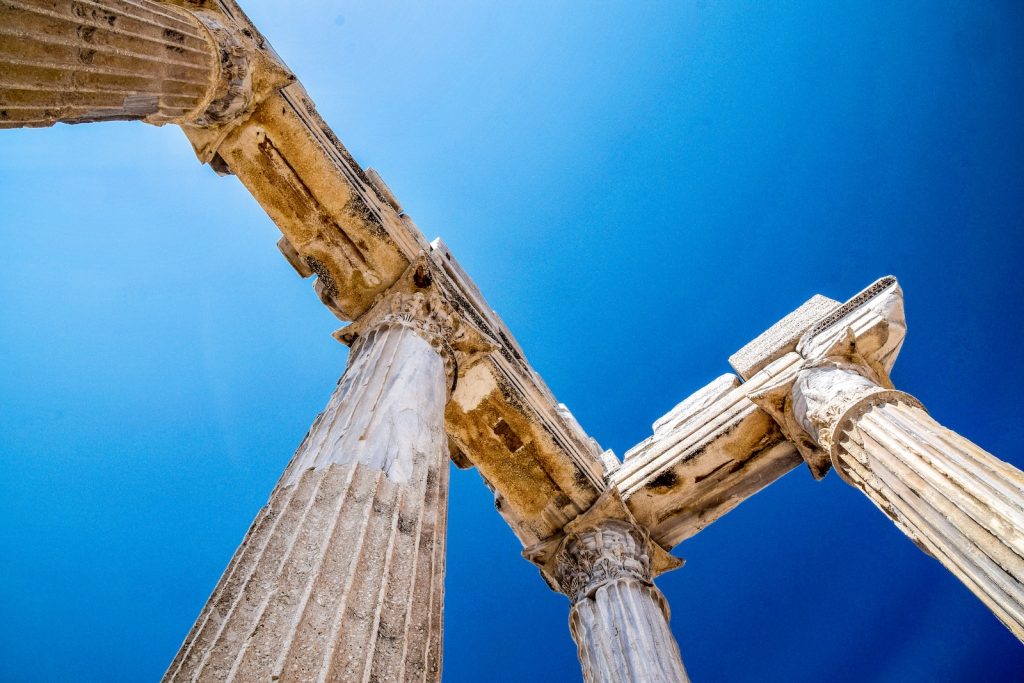
The games included a variety of events, including the stadion (a sprint), the diaulos (a double stadion), and the dolichos (a long-distance race).
Running was also important in ancient Egypt, where it was used for both practical and religious purposes. Egyptian soldiers were trained to run long distances, and running was also a part of many religious ceremonies.
In conclusion, running has been a part of human history for thousands of years. While we may never know exactly when humans first started running, it is clear that it has played an important role in our lives for a very long time.
Evolution of Running
Ancient Humans and Running
As early as seven million years ago, primitive humans evolved from primates and began to transition from tree climbing to bipedalism, which refers to species that walk on two legs.
Running was a natural progression from walking, and primitive humans learned to run around 4.5 million years ago, evolving from Australopithecus into Homo erectus. Running was likely used as a means of hunting and gathering, as well as a form of transportation.
Running in the Second Millennium
Running continued to be an important part of human life throughout history. Running was officially born as a sport in 776 BCE, in the town of Olympia. The first event in the first Olympics ever held was a race.
In fact, from its inception to 724 BCE., the stadion race was the only competition hosted at the Olympics. Running also played an important role in military training and preparation.
Running in Modern Times
Events featuring running came thick and fast during the third millennium.
The first recorded ultra race was the Comrades ultramarathon in South Africa on May 24, 1921. This running event still runs today on the same course of 89km (55miles).
Up until the 1970s, running was traditionally reserved for athletes and Olympians. However, the running boom started to pick up steam in the 1970s, and non-athlete celebrities began running for the host of health benefits.
Taking a cue from these celebrities, everyday folks laced up their running shoes to get in on the trend to become efficient running machines. Today, running is a popular exercise and recreation for people of all ages and fitness levels.
Running for Sport
Running aspect as a sport has evolved over the years, with various distances and events being added to the Olympics. Today, there are a wide variety of events, from short sprints to long distance running races.
Running has also become a popular form of charity fundraising, with events like marathons and half-marathons raising millions of dollars for various causes.
Overall, running has been a part of human history for millions of years, evolving from a means of survival to a popular form of exercise and sport.
History of The Ancient Olympic Games
The history of running as a competition dates back to ancient Greece, where it was a part of the Olympics.
The first recorded Olympic Games took place in 776 BC, and the only event was a footrace. Over time, other events were added, including the stade race (a sprint of about 200 meters), the diaulos (a double stade race), and the dolichos (a long-distance race). This was the first record of track running games.
The ancient Romans also had running events. Running races consisted of the stadium race (similar to the stade race) and the long-distance race.
Running competitions continued to be popular throughout the Middle Ages and into the modern era.
The Modern Olympic Games
The modern Olympics were founded by Pierre de Coubertin in Athens, Greece, in 1896. The idea behind the Games was to promote international understanding and cooperation through sport.
The first modern Olympics featured 14 countries and 241 athletes competing in 43 events. Since then, the Games have grown in size and popularity, with athletes from over 200 countries participating in a wide range of sports every four years.
The invention of Recreational Running
Running has come a long way from its origins as a means of survival and transportation.
Today, it is a popular form of exercise and recreation enjoyed by millions of people around the world. In this section, we will explore the history of recreational running.
History of Cross-Country Running
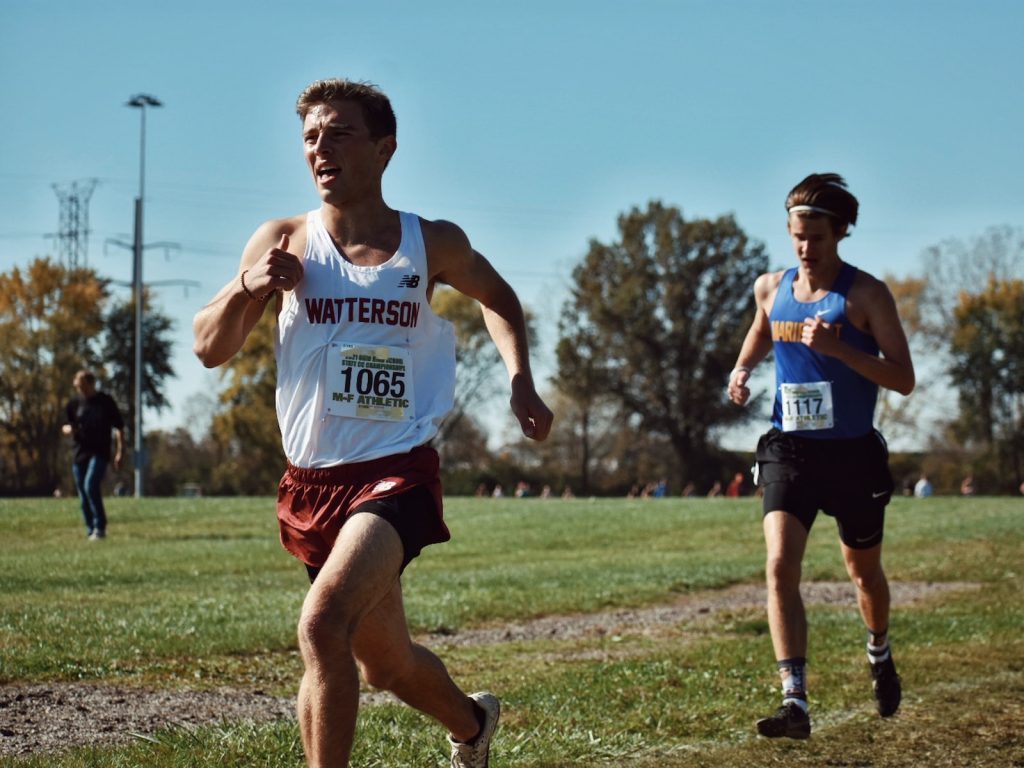
While no single person is credited with having invented cross country running, it is believed to have evolved from various running traditions throughout history.
Cross-country running has its roots in England, where it was used as a form of military training in the 19th century.
The first recorded cross-country race took place in 1837, and the sport quickly gained popularity. In 1867, the first national cross-country championship was held in England.
Cross-country running was introduced to the United States in the late 19th century, and the first national championship was held in 1906.
Today, cross-country running is a popular sport at both the high school and collegiate levels.
History of the Marathon
The marathon is a long-distance endurance running race that covers a distance of 26.2 miles. The first marathon was run in 490 BC, when a Greek messenger named Pheidippides ran from the city of Marathon to Athens to deliver news of a military victory.
According to legend, Pheidippides collapsed and died after delivering the message.
The modern marathon originates in the first modern Olympics, which were held in Athens in 1896.
The race was run over a distance of 40 kilometers (about 25 miles), and it was won by a Greek runner named Spyridon Louis.
The distance of the marathon was standardized to 26.2 miles in 1908, when it was included in the Olympics held in London.
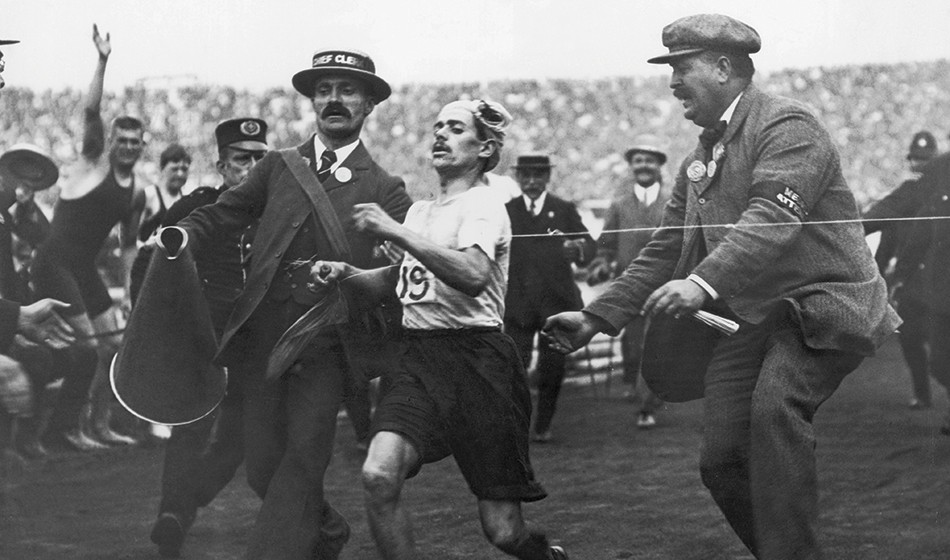
The picture above is Dorando Pietri crossing the line at the 1908 Marathon in London, he would be disqualified for gaining assistance. Read more on this amazing story here.
Today, the marathon is a popular event, with thousands of runners participating in races around the world each year. Fancy running one, check the calendar here.
Who was Thomas Running? (The man who invented running?!)
While researching this article, I came across a few references to a man named Thomas Running.
According to some sources, he is credited with inventing running in 1748 when he tried to walk twice at the same time.
However, after further investigation, I found that this claim is actually a running meme and not based on any factual information!
Thomas Running is not the man who invented running! #FAKE!
History of Jogging
Let’s not forget about jogging.
As I mentioned earlier, jogging became popular in the 1960s in New Zealand. It was initially seen as a form of exercise for athletes but soon caught on as a way for people to stay fit and healthy.
The term “jogging” was coined by William J. Bowerman, the co-founder of Nike, in the 1960s.
During the 1970s, jogging became a global phenomenon. It was seen as a way to improve cardiovascular health and lose weight. Many people started jogging in parks, on sidewalks, and on roads.
It was also during this time that the first jogging tracks were built in the United States.
By the 1980s, jogging had become a mainstream activity. It was no longer just for athletes or health enthusiasts.
People from all walks of life started to jog. It was seen as a way to relieve stress and improve mental health. Jogging clubs and groups started to form, and many charity runs and marathons were organized.
Today, jogging remains a popular form of exercise around the world. It is accessible, affordable, and can be done almost anywhere.
Many people still jog for health reasons, but it has also become a social activity for many. Jogging events, such as fun runs and charity races, are still popular and continue to raise money for various causes.
A Timeline of How Modern Running Evolved
| Approximate Date | What happened |
| 490 BCE | Pheidippides is thought to have run the legendary distance from Marathon to Athens in a feat of ancient barefoot running and the first marathon race. |
| 1896 | First modern Olympic games held in Olympia, Greece, features 100-meter and 400-meter sprint and marathon races. |
| 1897 | Boston Marathon is born in the US, popularizing this race format. |
| 1908 | During the London Olympics, the marathon distance becomes 26.2 miles at the request of the royal family, who wishes to watch the end of the race from their residence. Italian Dorando Pietri won the race but was disqualified for receiving assistance in what has become an emblematic photo. |
| 1909 | In 1909, marathon mania swept through the United States, with thousands of people taking up the sport and participating in races around the country. The trend was sparked by the success of Italian runner Dorando Pietri |
| 1924 | The 1924 Olympics marked the last appearance of cross-country as a standalone event at the Games. Since then, the sport has been incorporated as a discipline in the modern pentathlon, which also includes fencing, swimming, horse riding, and pistol shooting. |
| 1936 | Jesse Owens’ performance at the 1936 Olympics in Berlin is considered one of the most iconic moments in Olympic history. Owens, an African-American track and field athlete, won four gold medals in the 100m, 200m, 4x100m relay, and long jump events, setting world records in the process. |
| 1960s | Jogging’s popularity surged in the 1960s, as people became more interested in fitness and healthy living. The term “jogging” itself was first coined by a journalist named Bill Bowerman, who would go on to co-found Nike. Jogging appealed to many people because it was a simple, low-cost form of exercise that could be done almost anywhere. |
| 1968 | In 1968, Strom Thurmond, a United States Senator from South Carolina, made headlines when he took up jogging at the age of 65. At the time, jogging was a relatively new phenomenon, and Thurmond’s decision to take up the sport helped to popularize it among older Americans. |
| 1969 | The Boston Marathon race is moved to the third Monday in April. It was the first year that women were officially allowed to compete, although they were required to start 10 minutes before the men and were not given the same recognition or prize money |
| 1972 | American Frank Shorter wins the 1972 Olympic marathon giving rise to the running boom of the 70s. The publication of Jim Fixx’s best-selling book, “The Complete Book of Running,” in 1977 also helped to popularize the sport. |
| 1984 | Joan Benoit Samuelson wins first official women’s marathon at the Los Angeles Olympics. |
| 1986 | The Boston Marathon offered a total of $306,000 in prize money, with $35,000 awarded to the male and female winners. This was a significant increase from previous years, as the race had only offered a total of $15,000 in prize money just four years earlier. The increased prize money helped to attract top athletes from around the world |
| 1994 | First televised Western States 100 ultramarathon race in the US |
| 2002 | Boston Marathon becomes the first major marathon to allow wheelchair competitors |
| 2005 | First parkrun event held in Bushy Park, London, starting a global movement |
| 2018 | Camille Herron sets a new women’s world record for 24-hour running |
| 2020 | Numerous endurance running events canceled due to COVID-19 pandemic |
| 2021 | Eliud Kipchoge becomes first person to run a marathon in under two hours in INEOS 1:59 Challenge |
Conclusion
After researching the history of running, it is clear that the question of “when was running invented” is not a simple one to answer.
Running is an innate ability that both humans and animals have developed over time, and it has been used for various purposes throughout history, from hunting to carrying messages.
While some sources claim that Thomas Running invented running in 1612, this is not a widely accepted theory.
Running on two legs can be dated back to at least 4.5 million years ago, to Australopithecus, a two-legged early primate species in the ancestral past of modern humans.
Throughout history, running has played an important role in various cultures and societies, from the Greeks to the Persians to the Egyptians.
Today, running continues to be a popular form of exercise and a competitive sport, with organized running events like the marathon drawing participants from all over the world.
Overall, the history of running is a fascinating and complex subject. While we may never answer the question of “when was running invented” it is clear that it has been an important part of human and animal development for millions of years.
So while no one invented running (officially!), if you’re a competitive runner or enjoy going for a jog, it’s worth taking a moment to appreciate the rich history and evolution of this timeless activity.

